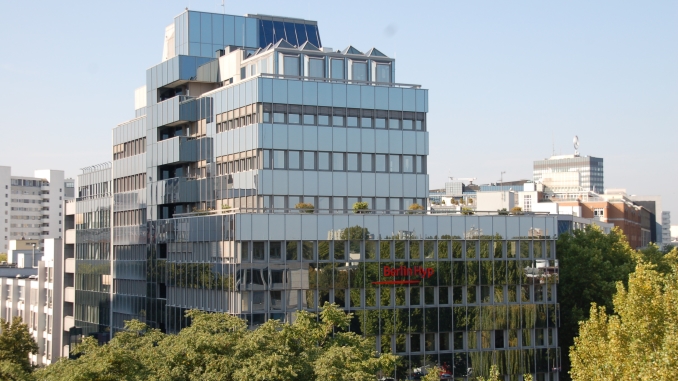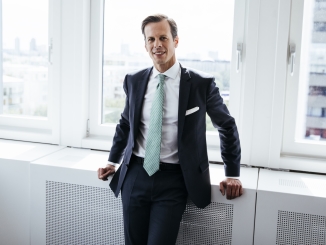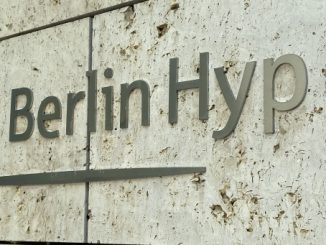
Berlin Hyp achieved the highest bid-to-cover ratio of any German Pfandbrief this year on Tuesday when it reopened the post-summer covered bond market with its 10th benchmark green bond, a €500m 10 year deal launched in the wake of “ambitious” new sustainability targets, and followed it up with a Swiss franc debut on Thursday.
Upon releasing its first half results on 13 August, the German bank announced new sustainability goals, including that lending against green buildings comprises one-third of its portfolio by 2025 – it achieved a 20% by 2020 target ahead of schedule last year. According to Bodo Winkler, head of funding and investor relations at Berlin Hyp, the timing of the new issue allowed the issuer to highlight such targets.
“At first glance, this might not seem too challenging for a bank that has reached its 20% goal one year early,” Winkler told Sustainabonds. “But at the same time, if you go into more depth, you’ll find that in order to reach the new target we will need more or less every second commercial real estate that we finance in the next five years to be green, so it really is ambitious.
“The deal has allowed us to underline how important from a strategic point of view this green finance is for us.”
Berlin Hyp is also aiming to provide full transparency on the climate performance and risks of its portfolio by 2025, and plans to develop “transformation loans” to finance energy-related refurbishments.
Berlin Hyp first entered the green bond market in 2015 with the first green covered bond and the new issue is its 10th benchmark green bond – its six green Pfandbriefe and four senior green bonds mean it remains the leading European bank issuer of green bonds.
Its last previous green Pfandbrief was issued as recently as 30 June, a €500m eight year deal. The issuer has a €500m redemption in October approaching and Winkler said that with conditions constructive, the issuer saw no reason to wait, particularly with the market potentially being impacted in September by European Union issuance later in the month.
“There is this ongoing discussion about the EU recovery fund entering the market with massive amounts,” he said, “and while I am not afraid of it affecting covered bond spreads, or at least Pfandbrief spreads, too strongly, it will at least limit further tightening potential.
“At the same time, the market seemed to be very constructive, with there not having been any issuance for a long time. And the last week of August, when there is typically not too much traffic yet in the market, has always been quite a nice week for us to issue, so we thought, why not continue with that?”
After a mandate announcement on Monday, leads Crédit Agricole, DZ, HSBC, JP Morgan and LBBW opened books on Tuesday morning with guidance of the 9bp over mid-swaps area for the €500m no-grow 10 year mortgage Pfandbrief. Orders surpassed €1bn within an hour, and after one-and-a-half hours the spread was set at 6bp on the back of books above €1.3bn, and the deal was priced to yield minus 0.122%. The book ultimately totalled some €2.15bn, comprising almost 100 accounts.
Syndicate bankers at and away from the leads said the new issue did not merely reopen the covered bond market after the summer break – the last euro benchmark having been on 8 July – but did so very successfully.
“It was good to finally see some supply,” said one, “and the book of €2.1bn is quite something.”
Winkler (pictured) said execution was “super-smooth”.
 “Demand really built up nicely and regularly right from the start,” he said. “Although what surprised me was that after we reached €1bn within an hour, we got around €800m of additional orders when we fixed the price after the second book update – I haven’t seen that on Berlin Hyp deals in the past.
“Demand really built up nicely and regularly right from the start,” he said. “Although what surprised me was that after we reached €1bn within an hour, we got around €800m of additional orders when we fixed the price after the second book update – I haven’t seen that on Berlin Hyp deals in the past.
“You are of course always a little bit expectant if you approach the market after a period in which there have been no other covered bond issues,” added Winkler, “but although we were confident that this would work, we understand that it had the highest bid-to-cover ratio of any German Pfandbrief this year, and we could not have expected that.”
The 6bp re-offer spread implied a new issue premium of up to 1bp, according to syndicate bankers.
“Our base case was plus 7bp and the best case was plus 6bp,” said Winkler. “Given the quality of the orders, it would have been possible to price a deal at plus 5bp, but this has never been Berlin Hyp’s style, taking the last basis point. It’s always nice to leave something on the table for investors, and hopefully they remember that next time.”
More than 40% of the paper was placed with SRI investors, according to the leads, and 44% outside Germany, with the Nordics allocated 16%, the UK 10%, the Benelux 6%, France 4%, and Italy 3%. Banks took 45%, funds 39%, central banks and official institutions 13%, and others 3%.
“It is of course very nice to see for us that we are also able to attract foreign investors to an instrument that is widely regarded as quite expensive, the German Pfandbrief,” said Winkler, “which we take as a positive reflection of all the investor engagement we have done in the past. The green element adds to this, of course.
“Whereas many other covered bonds in the recent past that came at tight levels were mainly driven by LCR accounts, almost 40% of this deal went to asset managers. That a bond with a negative yield of minus 0.12% gets such high traction among asset managers must be related to its green element.”
Berlin Hyp followed up the €500m green Pfandbrief with its first public green bond outside euros, a CHF125m (€93m) eight year senior preferred deal led by UBS on Thursday.
After an investor call on Wednesday, UBS went out with a CHF100m minimum eight year trade at a level of the mid-swaps plus 50bp area. The book hit CHF100m, with 25 accounts, after 20 minutes, and the deal was ultimately sized at CHF125m and priced at plus 50bp on the back of a CHF129m book comprising 34 investors.
“We are very happy with the outcome,” said Sven Schukat, head of treasury. “We gained a good number of new investors.”



